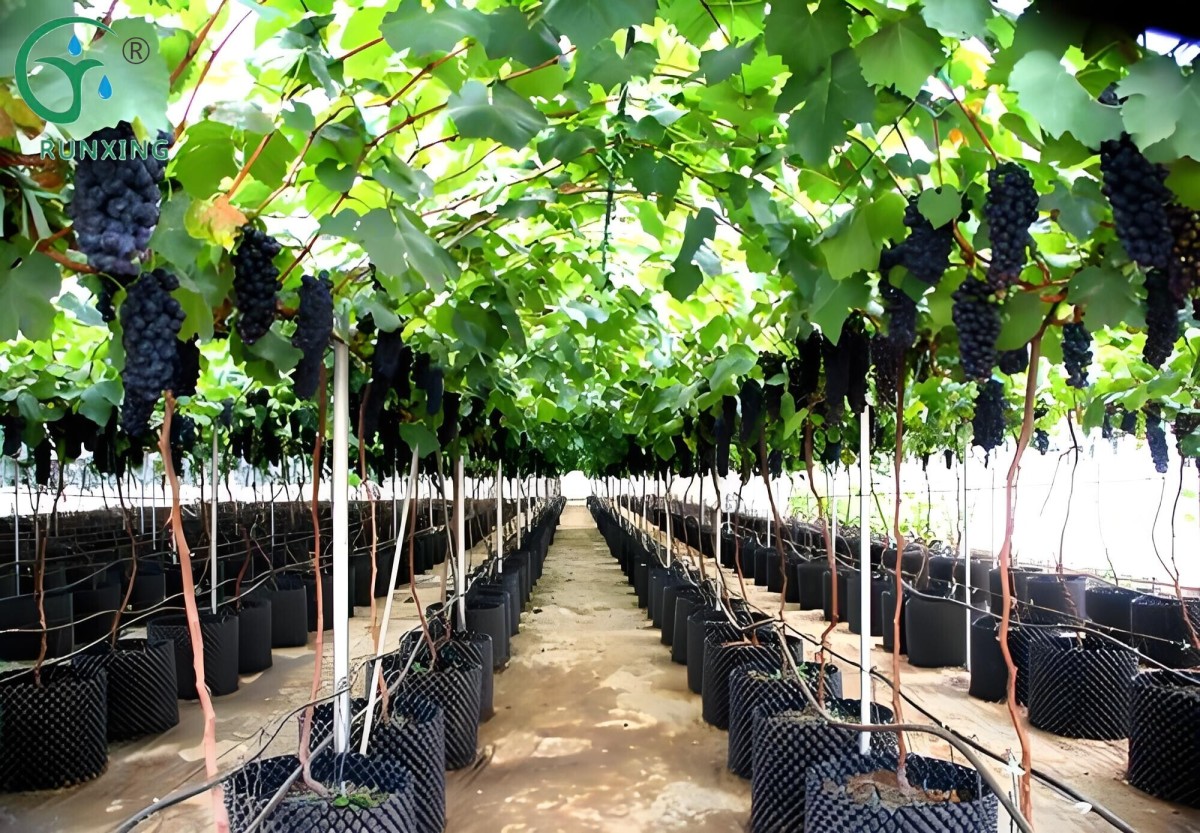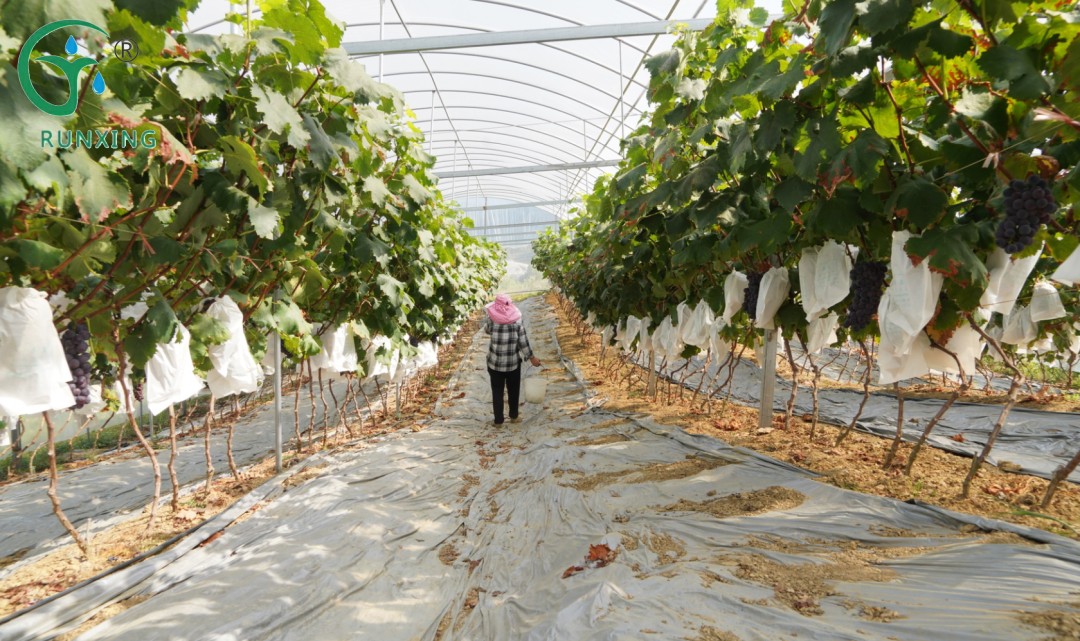Brazilian Grape Cultivation and Drip Irrigation Technology Overview
On the semi-arid tropical lands of Brazil, the cultivation of grapes relies heavily on efficient irrigation techniques, particularly drip irrigation systems. Drip irrigation technology plays a crucial role in Brazilian grape cultivation due to its advantages of water conservation, soil moisture retention, and prevention of soil salinization. This article provides a comprehensive introduction to whether Brazilian grape cultivation necessitates drip irrigation facilities, the required drip irrigation equipment, installation methods, water usage control, and cultivation techniques.

Does Brazilian Grape Cultivation Require Drip Irrigation Facilities?
In Brazil, especially in semi-arid regions like the São Francisco River Valley, grape irrigation relies on irrigation systems built by the government. However, to more precisely control water usage and reduce evaporation losses, farms widely adopt drip irrigation technology. Drip irrigation technology not only ensures the water required for grape growth but also significantly enhances irrigation efficiency and reduces costs. Therefore, Brazilian grape cultivation indeed requires drip irrigation facilities.
What Drip Irrigation Equipment is Needed?
Drip irrigation systems primarily consist of water supply devices, water transmission pipelines (main and branch pipes), and drip tapes:
Water Supply Devices: Including water sources, pumps, flow and pressure regulators, fertilizer mixing tanks, etc. These devices ensure that the water entering the drip irrigation pipelines has sufficient pressure for water delivery and drip irrigation.
Water Transmission Pipelines: Typically a two-level system, namely main pipes and branch pipes. Drip tapes are directly installed on the branch pipes, and filters are required on the water transmission pipelines to prevent clogging from rust or sediment.
Drip Part: Currently, polyethylene plastic film drip tapes are commonly used, with black-colored pipe walls to prevent the growth of algae inside. The left and right sides of the drip tape hose each have a row of drip holes with diameters of 0.5-0.7 millimeters, spaced 25 centimeters apart on each side, with the drip holes on both sides staggered.
How to Lay and Install Drip Irrigation Equipment?
The steps for laying and installing drip irrigation equipment are as follows:
Digging Ditches and Trenches: Arrange the branch pipes according to the grape planting rows, generally placing the branch pipes in the middle of the grape rows. The trench depth must meet the requirements for equipment installation, external pressure bearing, and winter drainage.
Installing Pipelines: Lay the main and branch pipes in the trenches. Before installation, inspect the piping and fittings to eliminate deformed, cracked, or damaged products.
Pressure Testing: Conduct pressure testing on the pipelines to ensure the tightness of the pipeline connections.
Installing Drip Tapes: Arrange the drip tapes according to the grape spacing and connect them to the branch pipes. Drip tapes can be connected using reducing tee connectors or bypass connectors.
System Debugging: After installation, conduct system debugging to ensure the normal operation of the irrigation system.
How Much Water is Needed and How to Control It?
The water usage for Brazilian grape cultivation varies by region, climate, soil, and grape variety. However, drip irrigation technology can significantly reduce water usage. By precisely controlling the outlet pressure and flow rate of the drip irrigation system, irrigation can be performed on demand, avoiding water wastage. Additionally, the drip irrigation system can be integrated with soil moisture monitoring and meteorological data analysis to achieve precise irrigation control.

How to Better Cultivate Grapes? What are the Cultivation Techniques?
Apart from drip irrigation technology, Brazilian grape cultivation also requires attention to the following techniques:
Site Selection: Choose land with sufficient sunlight, good ventilation, loose and fertile soil, and good drainage for grape planting.
Fertilization: Apply sufficient organic and composite fertilizers during soil fertilization to avoid nutrient deficiencies and imbalances when only soluble fertilizers can be applied through drip irrigation.
Pruning: Conduct pruning during the winter dormancy period each year, removing dead, weak, and overly dense branches to maintain a good tree shape and ventilation and light transmission.
Weeding: Regularly remove weeds under the trees to reduce the occurrence of pests and diseases and reduce competition for nutrients from weeds.
Pest and Disease Control: Regularly inspect plants to promptly detect and treat pests and diseases. Pesticides such as zinc thiocyanate can be used to control leaf spot diseases, and pesticides such as imidacloprid can be used to control aphids and spider mites.
Additionally, covering the soil with mulching film is an effective method to improve grape cultivation efficiency. Mulching film can maintain soil moisture, reduce water evaporation, inhibit weed growth, and increase soil temperature, benefiting grape growth and development.
In summary, drip irrigation technology is an indispensable part of Brazilian grape cultivation. By selecting appropriate drip irrigation equipment, properly laying and installing it, controlling water usage, and applying scientific cultivation techniques, high yields and high-quality grapes can be achieved. We hope this article provides valuable reference information for you.
If you have any needs, please contact us.
About Us
We are dedicated to offering innovative, water-saving, and labor-saving irrigation solutions for agriculture worldwide. Our focus on quality and continuous innovation drives the development and progress of the industr
LOGO
This stunning beach house property is a true oasis, nestled in a serene coastal community with direct access to the beach.
Opening Hours
Monday - Friday : 9AM to 5PM
Sunday: Closed
Closed during holidays
Contact
+18888888888
hezuo@eyingbao.com123 West Street, Melbourne Victoria 3000 Australia
